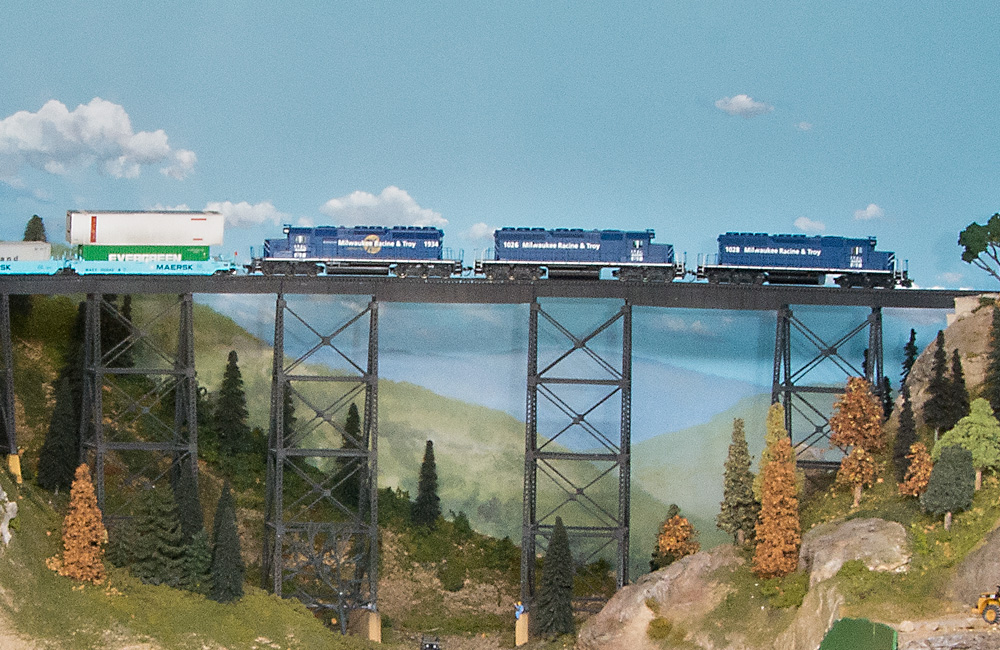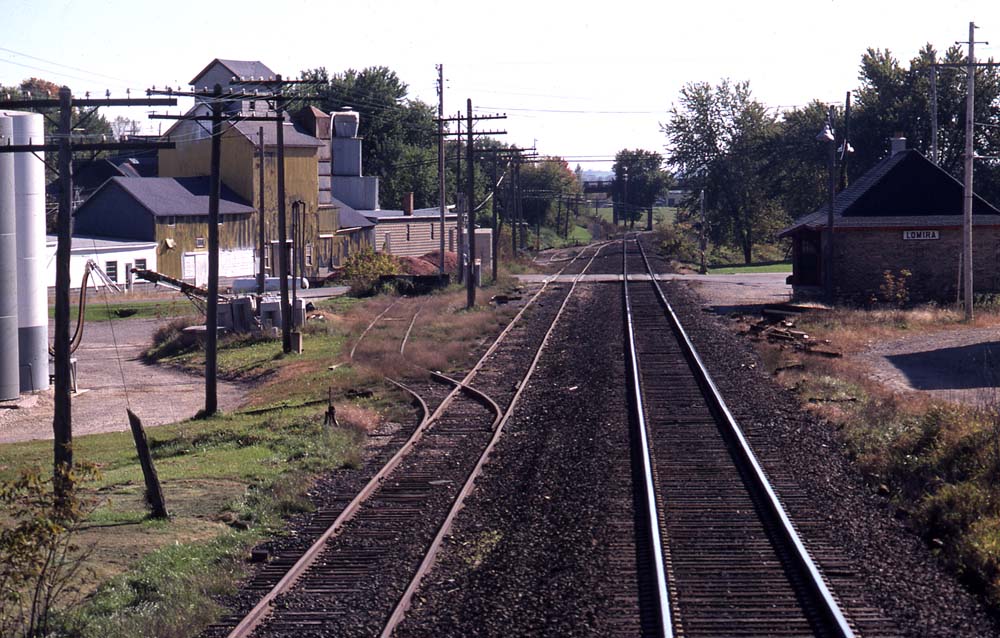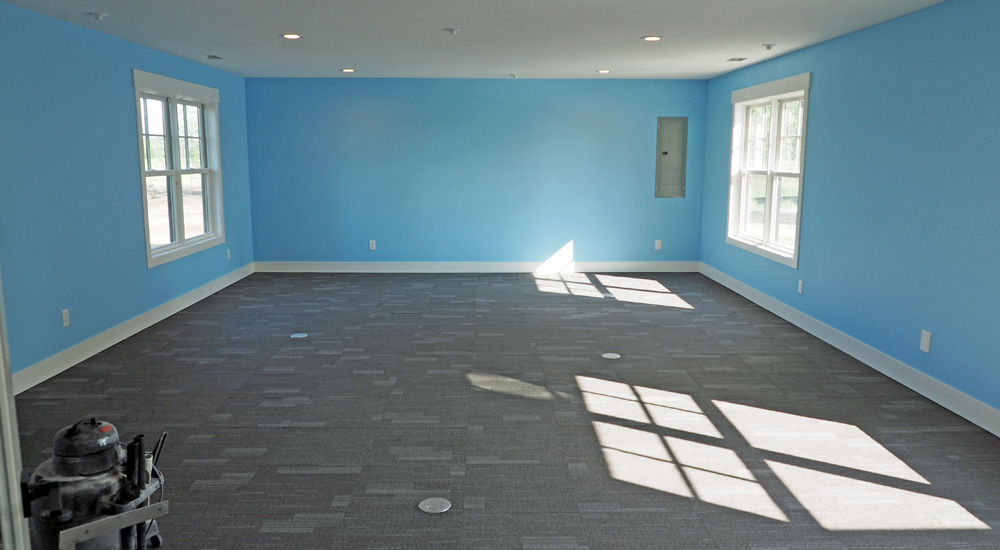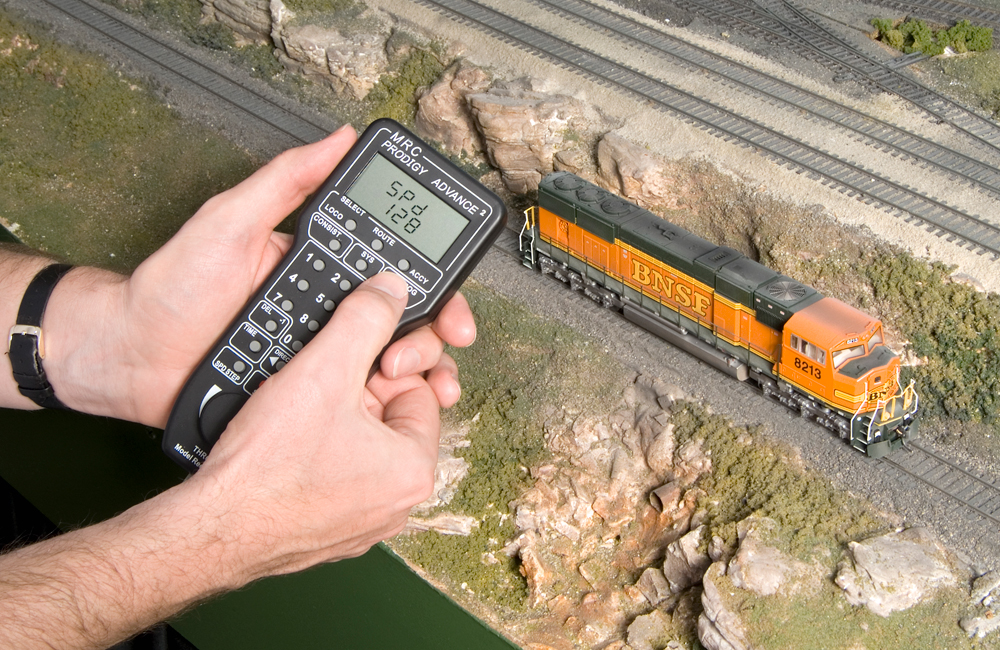
Q: I have a trestle bridge above a deep ravine on my HO scale layout and would like to automatically slow DCC locomotives approaching the bridge to avoid too rapid an entry. Using DCC, is there a method to provide such “auto deceleration?” — Paul Savello, Cedar City, Utah
A: Hi, Paul. Such a thing might be possible, but it would be insanely difficult. You would need a circuit to detect the locomotive as it enters the approach to the bridge. You would need some way to detect the DCC address of the locomotive in question. Then you’d need a DCC-connected programmable system, like an Arduino, to send a command to the DCC bus to slow down that locomotive. Step 1 is easily doable; step 3 is possible, but probably prohibitively complicated; and I have no idea how you’d accomplish step 2. A scale Automatic Car Identification system, perhaps?
Now, if you had a direct-current layout, you could just add a resistor to lower the voltage to that stretch of track. But since the voltage to a DCC-equipped locomotive’s motor is governed by the decoder, that tactic would not work reliably, and might cause the locomotive to stall completely if the voltage drops below the requirements for sound effects. So the short answer is, no. Sorry.
There is a way to fake it, though. Some high-end decoders have “macro” capabilities that let you program them to perform a series of steps in sequence. Basically, you put the decoder in learn mode, run the engine through its routine once, and from then on it will execute that program when you trigger it with a particular command. A drawback is that you’d have to program every locomotive separately. Also, while the macro is running, it’s driving the train, not you, and that kind of takes the fun out of things.
I would instead suggest putting a rule in the Employee Timetable requiring reduced speed on that bridge. If your operators forget or ignore that rule, a trackside signal permanently set to a “Limited Clear” or “Medium Clear” aspect should serve as a reminder.
Send us your questions
Have a question about modeling, operation, or prototype railroads? Send it to us at AskTrains@Trains.com. Be sure to put “Ask MR” in the subject.















“I have no idea how you’d accomplish step 2”
You don’t need to know the DCC address, you just use the DCC broadcast address. Look up “Braking District”
Your DCC control software should be able to do this. I use TrainContoller Gold and you can define a speed limit for a block of track if you use block detection.
The new DCC Concepts Super Panel should be able to do Steps 1 and 3 – download the manual from dccconcepts.com. For Step 2 I suggest assigning a consist address just to those locomotives that are going over the viaduct, if necessary changing it afterwards. You could use more than one consist address but all trains with one of those addresses would slow when any of them went over the viaduct.
The Super Panel only works with NCE systems.